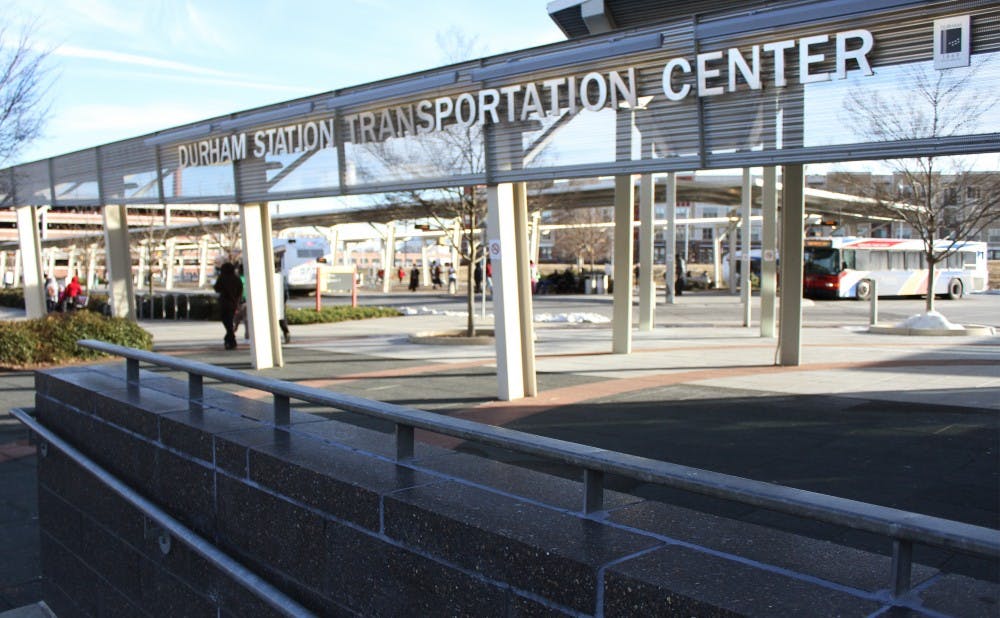Though plenty of construction and logistical questions remain for the Durham-Orange Light Rail Line, city leaders are optimistic about the project's future.

The light rail was proposed in 2013 and is looking at a tentative completion date of 2025 or 2026. With plans currently under development, the project is projected to cost more than $1 billion and will be funded through a mixture of federal, state and local dollars. In his recent visit to Durham, United States Transportation Secretary Anthony Foxx praised Durham's light rail transit project as an example of the future of American transportation.
"Projects like the Durham-Orange Light Rail Line will connect Americans to opportunity by improving access to jobs and education while helping to spur economic development in growing communities like Durham, Chapel Hill and across the country," Foxx—who was the mayor of Charlotte, N.C. from 2009 to 2013—said while in Durham Feb. 19.
The Durham-Orange Light Rail Line, proposed in 2013, will extend 17.1 miles, spanning from Chapel Hill through Durham. The route, which would take 39 minutes to travel in its entirety, would connect major activity centers in the area including the hospitals at Duke and the University of North Carolina at Chapel Hill, downtown Durham and North Carolina Central University.
Durham city leaders are already making way for the light rail by planning for the resulting economic development.
“Transportation is very key for people living in communities to get to jobs," said Durham Mayor Bill Bell. "What we’re hoping is the connection between Durham-Orange, and hopefully Wake, will help facilitate that.”
Don Moffit, a Durham City Council member, said in order to encourage economic development around the proposed light rail stops, the city is using a plan that creates six zones of development. The zones allow flexibility in how buildings around the stop are used by granting owners discretion about whether to use the space for residential, commercial or office use.
Residents in these zones will be able to change the use without having to apply for the city’s rezoning approval, something Aaron Cain—who works for the strategic planning division of the Durham City-County Planning Department—said can otherwise be a lengthy process.

“In areas not under [the zones of development], rezoning can take anywhere from six months to a year,” Cain said.
Within the economic development planning, some Durham officials are considering the influence of light rail stops on nearby home prices.
Moffit noted that some market-rate housing—such as the apartments near the proposed LaSalle Street stop—could become more expensive with the introduction of the light rail if the city doesn’t intervene. He said the City Council is focused on making sure that as the light rail centers develop, 15 percent of the homes will be priced at 60 percent of local area median income.
“We’re very fortunate that the Durham Housing Authority owns a lot of property within the activity center,” Moffit said.
Bell echoed Moffit’s desire to maintain affordable housing options in his state of the city speech last month, saying that this will contribute to an overall reduction of poverty in Durham.
In an effort to compare notes about how to move forward, Bell said he has spoken with transportation leaders in cities across North Carolina.
"We were in constant contact with Charlotte as far as what they were doing procedure-wise,” he said.
Cain said that Durham leaders are aware of how other areas, such as Charlotte, are choosing to move forward with their own light rail programs. Charlotte's light rail system, however, differs from the Durham-Orange proposal because it doesn't span multiple counties. Cain said that Durham has taken an overall different approach, especially in its decision to create more flexibility in zoning.
Officials acknowledged that planning between Chapel Hill and Durham has differed greatly, especially in the way that zoning around the proposed stops has been handled. Cain said that Chapel Hill will evaluate zoning requests individually instead of leaving it up to residents.
“It’s definitely a different approach than Chapel Hill, which is taking a more fine grain approach, evaluating each individual building or project,” Cain said.
Bell noted that this plan will need to depend on federal funding. Durham officials plan to apply for many grants, including some from the U.S. Department of Transportation, in the completion of this project.
“If the federal government approves what we’ve done in 2019 they would give a full-funding grant agreement [to continue] construction from 2021 to 2025.” Bell said.
City leaders expressed optimism about the project’s future, despite the foresight and structural planning needed.
"The big pieces are that we have the ordinance that we need to have with [North Carolina] right now to be on board,” Bell said. “It’s complex but it’s doable."
Get The Chronicle straight to your inbox
Signup for our weekly newsletter. Cancel at any time.

